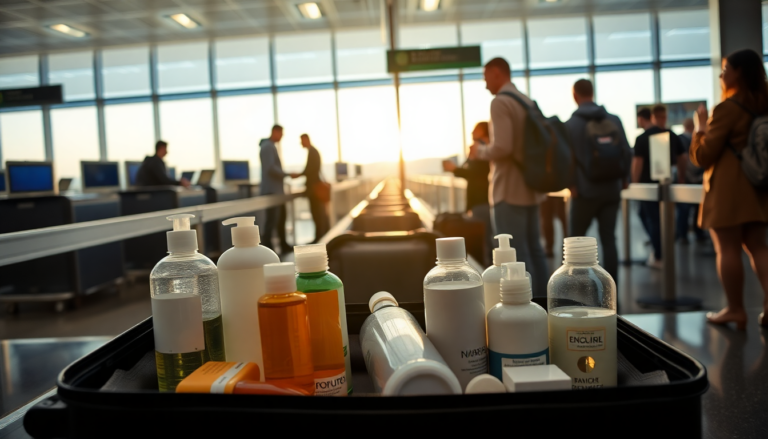Argomenti trattati
The world of travel is often filled with excitement and anticipation, but when it comes to airline regulations regarding liquids, that thrill can quickly turn to frustration. Imagine this: you’re standing at the security checkpoint, your carefully packed toiletries and beloved skincare products in tow, only to discover that the rules have changed once again. As summer approaches and travel picks up, understanding what you can bring in your hand luggage becomes crucial to avoiding unexpected expenses. So, what should you know?
Decoding the Liquid Regulation Maze
In recent years, the regulations regarding carrying liquids on flights have seen a lot of changes, yet the way these rules are applied can vary wildly from one airport to another. Picture this: during the bustling travel season, when millions of holidaymakers are jetting off, confusion is at a peak. Some European airports have embraced advanced scanners that allow travelers to carry liquids in larger containers—extending the limit beyond the old-school 100 ml per item. Now, passengers can bring up to two liters of liquids onboard! What a relief for anyone who prefers their favorite products over those tiny, travel-sized options!
However, this inconsistency among airports can leave many travelers stranded at security, only to find out too late whether they can keep their beloved sunscreen or must surrender it. Major hubs like Milan’s Malpensa and Linate, Rome’s Fiumicino, and various airports across London, Paris, and Madrid have adopted these more permissive scanning technologies. Yet, others cling to the outdated restrictions, leaving passengers in a state of uncertainty. Isn’t it frustrating to leave your cherished products behind?
The Financial Fallout of Confusion
As a former chef, I can tell you that precision and clarity are vital in every step of the process, and traveling should be no different. Unfortunately, the lack of uniformity in airport regulations can lead to some serious financial repercussions. Imagine finding out your liquids have been confiscated due to non-compliance, forcing you to check your trolley bag at the last minute. The costs associated with this can be staggering, varying widely from airline to airline.
For instance, Ryanair charges between €35.99 and €75 for last-minute baggage checks. Vueling isn’t far behind, with fees ranging from €40 to €75. WizzAir and easyJet impose similar charges, hovering around €65-70. And let’s not forget Ita Airways, which can impose fees starting at €60 for domestic flights and soaring to a jaw-dropping €130 for intercontinental journeys. Ouch! No one wants unexpected expenses to tarnish their travel experience, especially if they’re on a budget.
Finding Clarity in the Chaos
The confusion surrounding liquid regulations has prompted organizations like Assoutenti to call for clearer guidelines. They advocate for a comprehensive, easily accessible list detailing which airports permit liquids over 100 ml in hand luggage. As a culinary storyteller, I believe that every journey—much like every dish—should be savored without the bitter aftertaste of unexpected fees or last-minute adjustments.
In this age of travel, where experiences are meant to be cherished and savored, understanding the rules of engagement—especially regarding what you can carry onboard—shouldn’t feel like a game of chance. So, as travelers, equip yourself with knowledge and prepare adequately to ensure your journey is as delightful as the destinations you explore. Are you ready to travel smarter?

